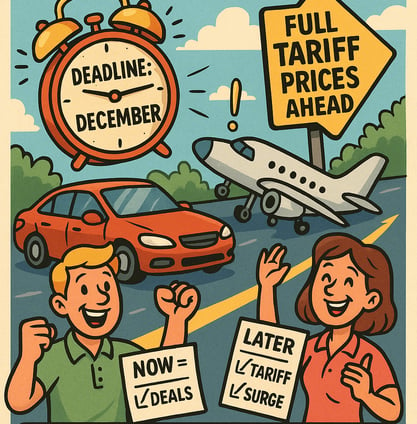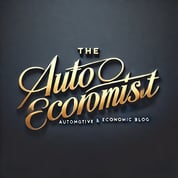Why Tariffs Have Yet To Impact New Car Prices
Tariff turbulence isn’t over yet. While short-term price dips have surprised analysts, new trade deals—like the evolving U.S.–UK agreement—signal steeper costs ahead. Temporary breaks on auto and aerospace tariffs won’t last, and steel still faces a 25% hit. With final rules expected by December, consumers and businesses have a narrow window to lock in pre-tariff pricing before the next wave of increases takes hold.
Folks, let’s rewind exactly one year—back when the cognitively absent Joe Biden was still the Democrats' pick for president and the so-called "experts" were in a tizzy predicting Trump’s tariffs would launch inflation into the stratosphere. Remember that? You might be asking, where is the inflation?
Here was the common-sense argument: American wallets weren’t deep enough to handle another round of inflation. Period. Consumers weren’t going to eat those costs. If prices went up, demand would drop—companies would have to cut prices. Even Goldman Sachs, yes Goldman, backpedaled on its own prediction, conceding the inflation would be a blip—transitory!
Fast forward: Trump said foreign companies would bear the brunt. And now? The evidence is in, and it is stunning. Japanese exporters, slapped with Trump’s 25% auto tariffs since April, didn’t pass costs onto American buyers—they slashed their prices instead. That’s right. A record plunge in export prices for passenger cars to North America. We're talking double-digit drops. Why? Because if they didn’t cut prices, they’d lose market share. Trump was right.
Goldman now scratching their heads, pointing to “mystery” declines in Japanese car prices not explained by currency shifts. They're scrambling for explanations: inventory adjustments, profit-shifting, maybe the FX effects—but none of it sticks. The fact is, tariffs are hitting them, not us.
This, my friends, is a masterclass in leverage. Foreign producers blinked. They’re eating the tariffs. And while the long-term game is still playing out, five months of data speak volumes. Trump knew the rules of engagement. He bet on America’s market power—and he won.
So let’s call it what it is: a reverse game theory play. The first to drop prices wins market share. Trump played it, and he nailed it. Again.

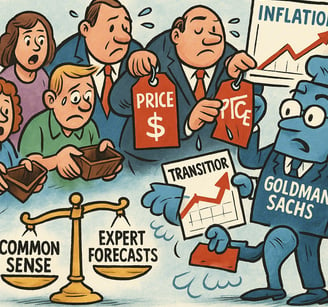
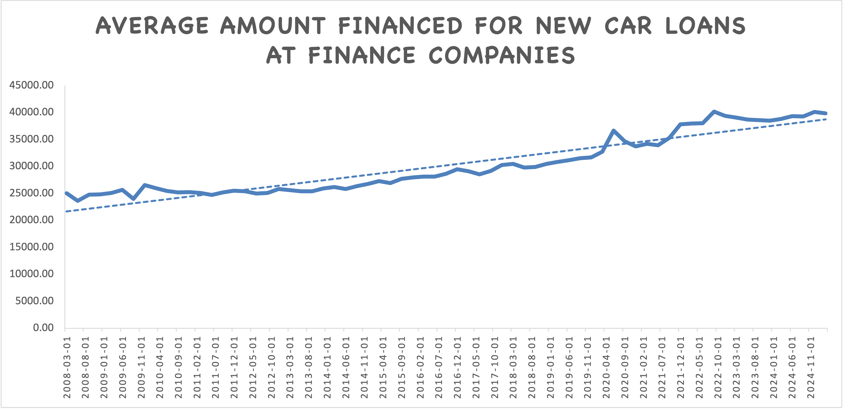

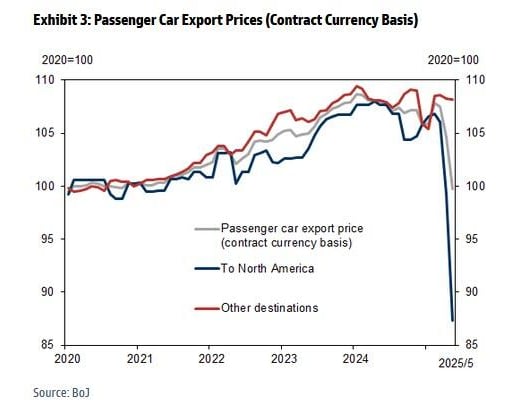

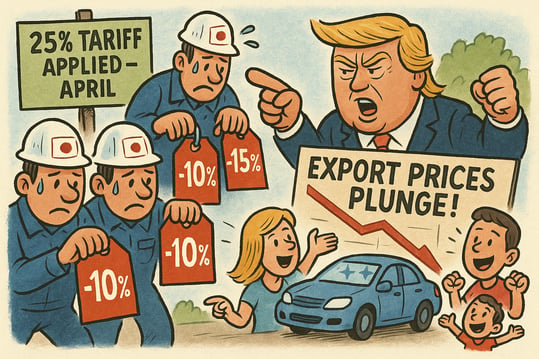

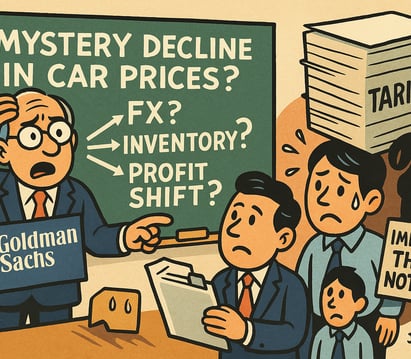

New Vehicle Prices Will Rise
It’s far from over. As tariffs are still being negotiated and ratified, prices are heading upward—and come December, the full brunt of tariff adjustments will hit the market. The U.S.–UK “Economic Prosperity” deal, struck at the June G7 summit, has temporarily reduced auto tariffs for up to 100,000 UK-built vehicles to 10% (the standard being 25–27.5%) and eliminated a 10% tariff on aerospace exports. But steel (and aluminum) still face a 25% levy—better than the global 50%, yet still costly. Final rules on quotas and "melted-and-poured" origins are still pending and expected to be locked in by July or later.
What this means: if you want to beat the curve, you've got a few months—especially for autos and aerospace. Once implementation wraps—likely by December—you’ll be dealing with full tariff-adjusted prices across the board. Prepare now: lock in deals before the year-end tariff regime fully settles in.
